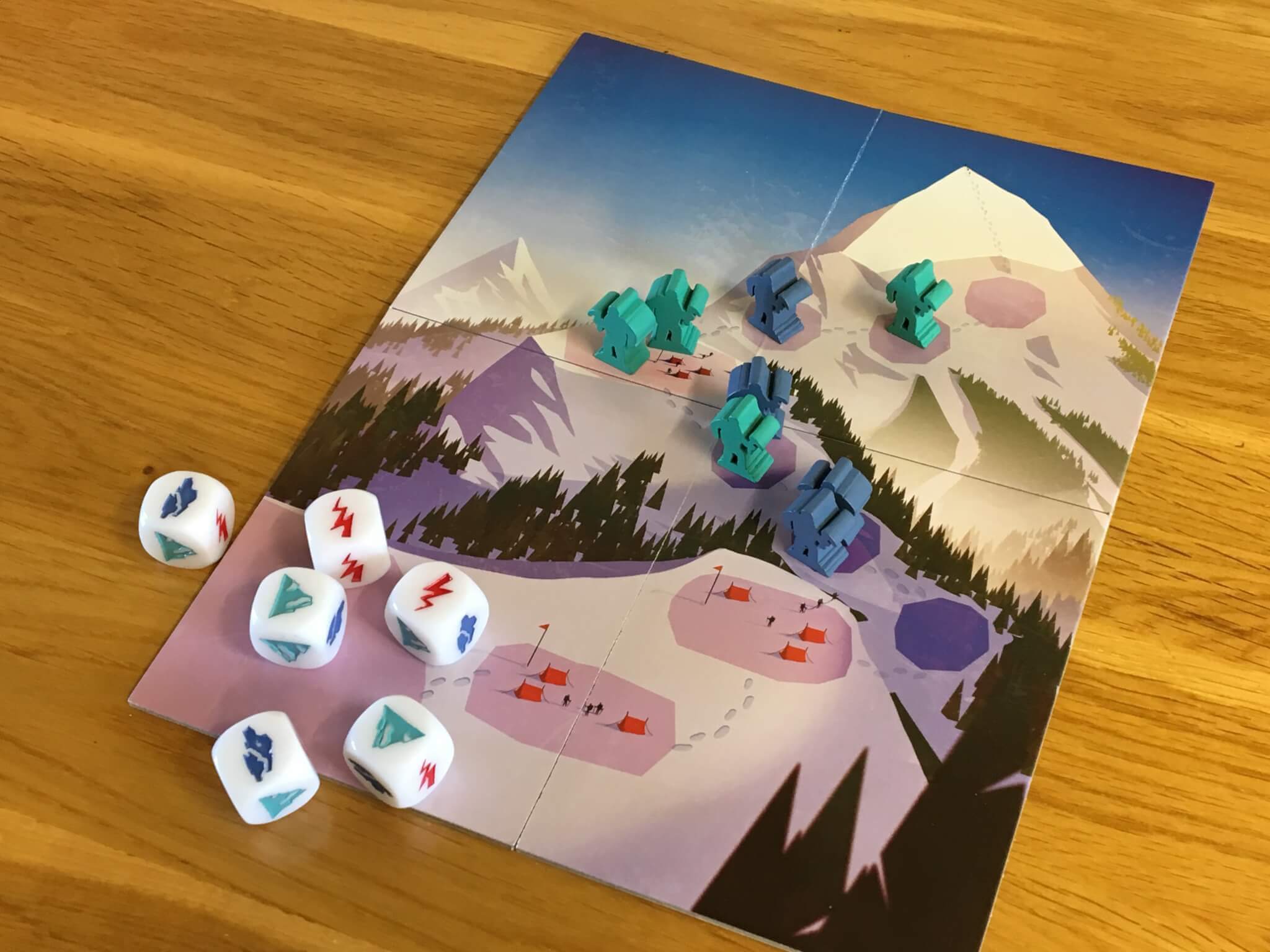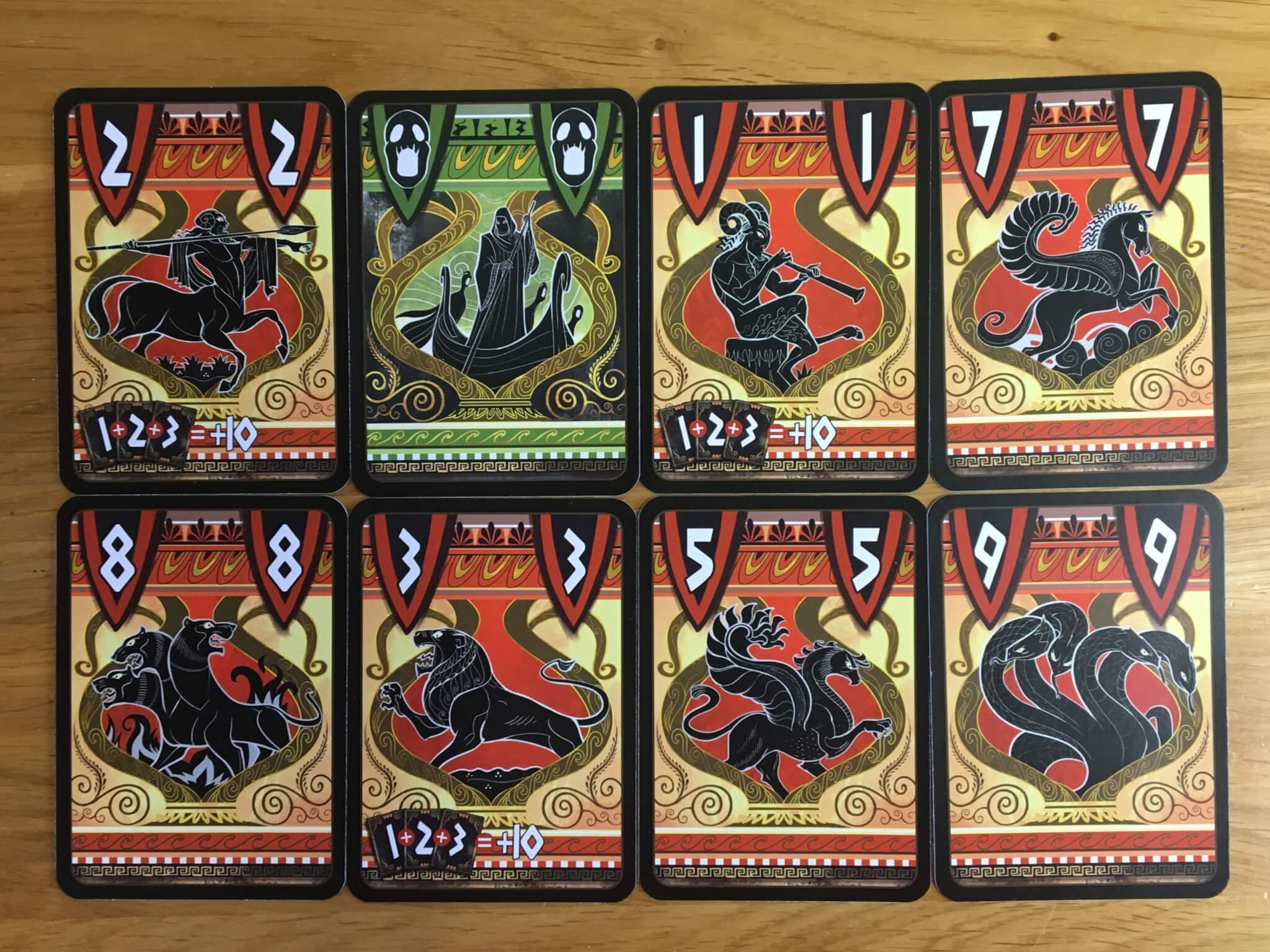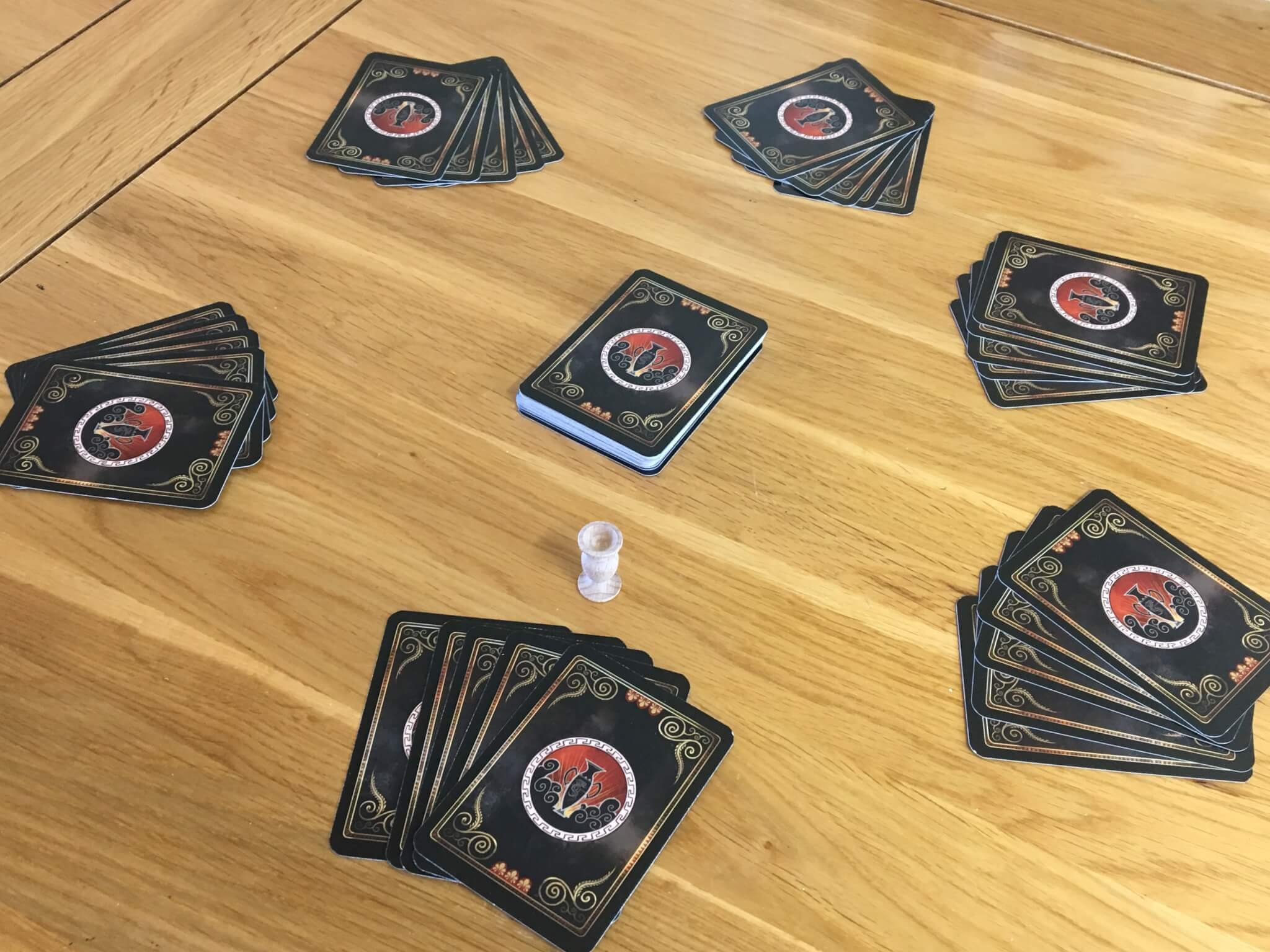IELLO Mini Games — Nessos and High Risk
You may already have heard of IELLO Games range of Mini Games, the most popular of which is almost certainly Schotten Totten. There are several others in this series of simple, small box experiences however, and with IELLO launching several new ones in the past few months, we’re taking a look at two of the latest additions; Essos and High Risk.
As the series Mini Games suggests, each of these games is a small, lightweight experience that can be learned and played quickly, usually with a straightforward central theme such as pushing your luck or bluffing against the other players. Nessos is a design by Takaaki Sayama and Toshiki Arao, whilst High Risk is from Trevor Benjamin and Brett Gilbert. Rounding out this all-star cast are artists Miguel Coimbra and Biboun, which really shows IELLO’s commitment to this series.
In High Risk, players will simply need to scale a mountain by rolling dice and pushing their luck. This basically boils down to rolling six dice, reserving climb symbols then hoping to avoid disaster and weather symbols before potentially re-rolling again. A variable number of climbers will represent each team, with higher player counts resulting in fewer pieces per player, further adding to the jeopardy in decision making terms.
Nessos is a very different prospect, featuring a single deck of cards and a first player token. In this bluffing game based on ancient Greek mythos, players will attempt to obtain sets of specific amphora cards whilst simultaneously attempting to rid their hands of cards that show Charon (the ferryman of Hades.) This is achieved by offering cards face down to one another, with the following players either accepting the card(s) offered or adding another to the stack.

Where High Risk is concerned, there are two clear elements to take into consideration; firstly, the roll of the dice and the decision about whether or not to reroll disaster symbols. If a player has rolled a number of climb symbols and decides to reroll two disaster dice, then rolling another disaster face will result in a wasted turn. Every so often however, the mountain features bivouac spaces that allow players to rest, essentially meaning that they can never fall below that level.
The second interesting feature in High Risk is that of the placement of other pieces on the mountain. If a player should land on the same space as another piece, then that piece will be knocked back to the nearest base camp. This can lead to some fairly nail biting interactions — especially at higher player counts when there are fewer pieces for each player, and longer to wait between turns.

Nessos is more straightforward and could be compared to a number of classic card games. Each player is dealt five cards at the beginning of the game and then the first player will then offer one of those cards to another player, declaring a number. The number declared must match that on the card (if it is a numbered card) or if it’s a Charon card, any number can be stated. The player who is offered the card may either take it without looking, pass it back to the previous player, who must then then if flip it and place it on the table. If the player passed a card accepts the card, they must add a card of their own and offer the pair of cards to another player (the stack of cards in any offer can be up to three at most.)
The object of the game is to amass a set number of points (usually set by player count) by having cards placed face up in front of you. It’s also essential to avoid Charon cards and any player who obtains three of them will be immediately out of the round. There’s no specific set collection theme or benefit to collecting cards in suits, but put simply, cards with a higher value are worth more towards your total and should be prioritised.
High Risk is the pick of the pair for me, but both games represent great value considering their very low cost and high production value. Nessos has superb card art that has an evocative theme running throughout and enough interesting creatures to hold the attention of the players. High Risk, on the other hand, uses a larger-than-expected fold out board and a set of superbly sculpted climbers, in addition to those fantastic dice.
Whilst I haven’t played any other games in the series, High Risk and Nessos seem like great additions to the IELLO Mini Games line, but they will obviously be more suitable for players looking for a relatively lightweight experience. Neither is heavy or complex and the decisions you’ll make are fast and fun. In general, I’d suggest that both are best played at the higher end of their player count. Nessos specifically is essentially a party game that would be great at a pub or in a similar setting with friends who don’t take things too seriously.
Nessos and High Risk are available for purchase now. You can find out more about all of the IELLO Mini Games on the IELLO website.



Comments are closed.